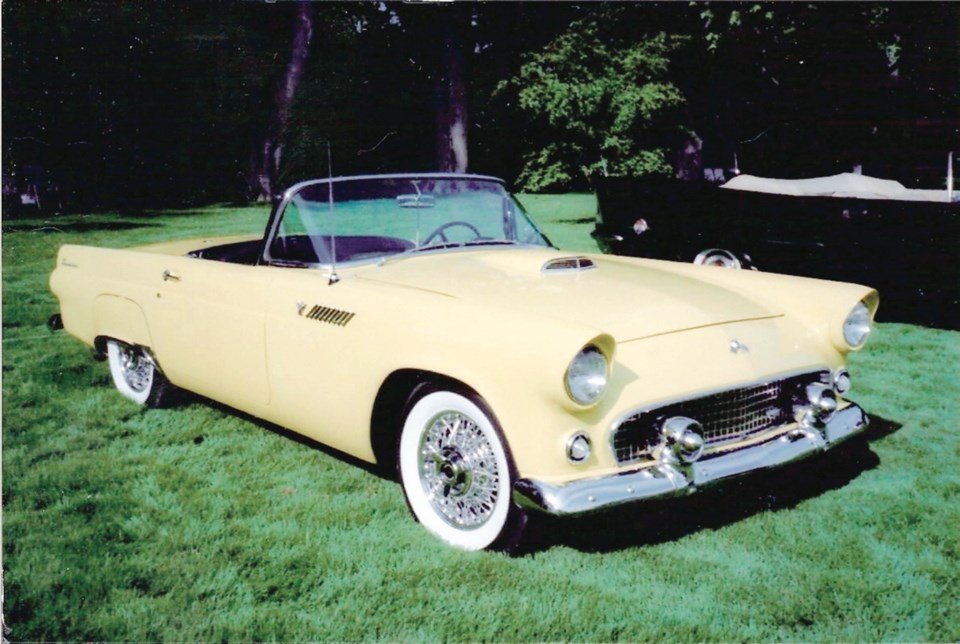The English sports cars that began arriving in North America after the Second World War brought an enjoyable new dimension to motoring. They were not meant to be practical — they were just for having fun. It was a new concept in driving.
The fact that flimsy canvas offered minimal weather protection, tiny trunks lacked space and rides were harsh didn’t matter. What did matter were slick-shifting four-on-the-floor transmissions, precise steering, knock-off wire-spoke wheels, cut down doors and folding windshields.
Much earlier American sports cars like Stutz Bearcats, Mercer Raceabouts and Auburn Boattail Speedsters had been too expensive to become popular. Those nimble, little MG, Triumph and Austin-Healey roadsters were affordable enough to light the sports car fire. Those with more money could buy a Jaguar.
Smaller American manufacturers responded. Crosley Motors of Cincinnati, Ohio introduced its tiny Hotshot in 1949. Nash Motor Co. was next in 1951 with its lovely Anglo-American Nash-Healey.
The first of the Big Three (General Motors, Ford and Chrysler) with a post-war sportster was GM’s 1953 fibreglass-bodied Chevrolet Corvette. It was a tentative step. GM made only 300 1953 models and gave them a decidedly unsporty two-speed automatic transmission.
Ford’s response two years later took a different tack. While the Corvette was based on Chevrolet sedan components it was a total departure from the regular model line. Ford’s steel-bodied Thunderbird on the other hand was like a cut-down full-size Ford.
While the Corvette emulated foreign sports cars with things like drafty side curtains, basic fabric top and individual bucket seats, the T-Bird had wind-up windows and an optional hard top. Ford called its new T-Bird a “personal car” and included all the amenities of its full-size siblings.
The Thunderbird’s use of many existing parts resulted in a strong Ford family identity. The horizontal fender line followed the redesigned full-size ’55 Fords. Headlamps and taillamps were drawn from Ford sedans and instrument panel and hardware resembled those of big Fords.
Under the T-Bird’s hood was Ford’s corporate 4.8 litre (292 cu in.) overhead valve 193 horsepower Mercury V8 with standard three-speed manual transmission (with overdrive available). With the optional three-speed “Ford-O-Matic” it was 198 horsepower
Ford’s new two-seater was introduced as a 1955 model and became an immediate success. In spite of Chevrolet’s sensational new overhead valve V8 Chevy sold only 700 1955 Corvettes while Ford sold 16,155 Thunderbirds. Corvette’s dismal sales brought GM to the brink of discontinuing it and only the T-Bird’s presence and Chevrolet’s enthusiastic general manager Ed Cole convinced the corporation to keep it.
A performance comparison with the 1955 Corvette V8 found the T-bird a little slower. Road & Track (7/55) reported that the Corvette, in spite of its six cylinder engine mated to a “Powerglide” automatic, sprinted to 97 km/h in a quick 8.7 seconds and reached a top speed of 188 km/h.
The T-Bird with automatic (8/56) took 9.5 seconds to 97 and topped out at 181 km/h. Its slower performance could be blamed on its extra 313 kg.
The Thunderbird was carried into 1956 with the same body, although it gained some luggage space by mounting its spare externally “Continental” spare. A larger 5.1 litre optional V8 developed 215 horsepower with manual transmission and 225 with automatic. Cowl vents were added for better cabin ventilation.
There were some changes for 1957 but the basic theme remained. There was a new combination grille and bumper, and stretching the trunk five inches allowed the spare tire back inside; the Continental mounting was still optional. In keeping with Detroit’s fin craze, small canted blades sprouted from each rear fender.
The bigger news was under the hood. The 5.1 litre V8 could now be had with a Paxton-McCulloch, belt-driven centrifugal supercharger bringing horsepower to 300. Supercharged ‘Birds would prove to be very rare with only 208 produced.
Power for the base 4.8 litre engine was increased to 212 and the normally aspirated 5.1 developed 245; a few modified versions put out more.
Although 1957 was a good year for Thunderbrid with 21,380 sales, it would be the last of the original two-seaters (Ford would revive it in 2002).
Ford Division’s austere general manager Robert McNamara, one of the post-Second World War “Whiz Kids” hired by Henry Ford II to save the company, decided there was more profit in four-passenger Thunderbirds. In so doing it, he left the American sports car field to the Corvette.
McNamara proved correct. Larger “personal luxury” Thunderbirds did earn far more money for Ford than the Corvette did for GM, but two-seater T-bird aficionados never forgave him. Original two-seater Thunderbirds are now popular collectibles, particularly the supercharged models.



